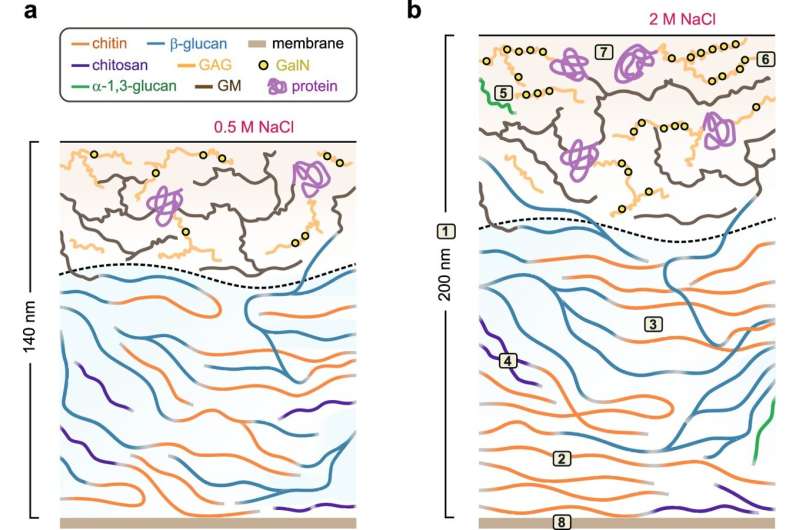This article has been reviewed according to Science X's editorial process and policies. Editors have highlighted the following attributes while ensuring the content's credibility:
fact-checked
peer-reviewed publication
trusted source
proofread
Fungi's secrets for surviving a hypersaline environment

Many organisms have evolved to survive in some of the Earth's harshest conditions, tolerating freezing temperatures, crushing pressures and other extremes. In studying these organisms, scientists deepen our understanding of how life has adapted on our planet—and of what it could look like on others.
Researchers from Michigan State University have helped provide the latest insights on this front with a report published in the journal Nature Communications. The team showed how microorganisms known as halophilic fungi stand up to high salt concentrations that would be lethal to other microbes.
"Halophilic fungi have a remarkable talent for thriving in extremely salty environments where other microorganisms can't survive," said Tuo Wang, a corresponding author of the new study. Wang is also in the Department of Chemistry in the College of Natural Science.
"While this ability can pose challenges in areas like food preservation, where these microbes grow well even in salty conditions, it also opens doors to exciting possibilities," Wang said.
For instance, such fungi could be harnessed to replace fresh water with seawater in industrial processes, potentially easing water scarcity concerns and reducing the risk of contamination from other microbes.
In the new report, Wang and his colleagues revealed how halophilic fungi rearrange their cell walls to minimize water loss and uphold their structure in extremely salty settings.
To make its discovery, the research team relied on its expertise using a technique called solid-state nuclear magnetic resonance spectroscopy. This let the researchers examine the nanoscale assembly of carbohydrates and proteins in the cell walls across multiple salt-loving fungal species—specifically, Aspergillus sydowii and several other halophilic Aspergillus species.
Their methodology allowed them to study native living fungal cells without introducing any chemical or physical changes.
"We found that these fungi produce thickened, stiff, hydrophobic and adhesive cell walls when growing at non-optimal salt concentrations, which allows the fungi to resist external stress," said Wang. "This discovery highlights the importance of the cell wall, which directly interacts with the environment, enabling fungi to adapt and survive in nature."
Wang's MSU team includes three graduate students: Liyanage Fernando, Malitha Dickwella Widanage and Anand Jacob. This interdisciplinary research also received valuable input from prominent microbiologists, Wang said, including teams led by of Ramón Batista-García, Nina Gunde-Cimerman and Jean-Paul Latge in Mexico, Slovenia, Greece and France.
The study was further enhanced by access to advanced high magnetic field instruments at the Environmental Molecular Sciences Laboratory, Pacific Northwest National Laboratory in Richland, Washington, with assistance from chemist Andrew Lipton; and the National High Magnetic Field Laboratory in Tallahassee, Florida.
The methodology developed in this study has opened doors to investigating how various halophilic fungi, and potentially other organisms, adapt to non-conventional environments. This will enhance our understanding of life itself and provide valuable insights for leveraging microbes in modern technology, Wang said.
More information: Liyanage D. Fernando et al, Structural adaptation of fungal cell wall in hypersaline environment, Nature Communications (2023). DOI: 10.1038/s41467-023-42693-6
Journal information: Nature Communications
Provided by Michigan State University





















